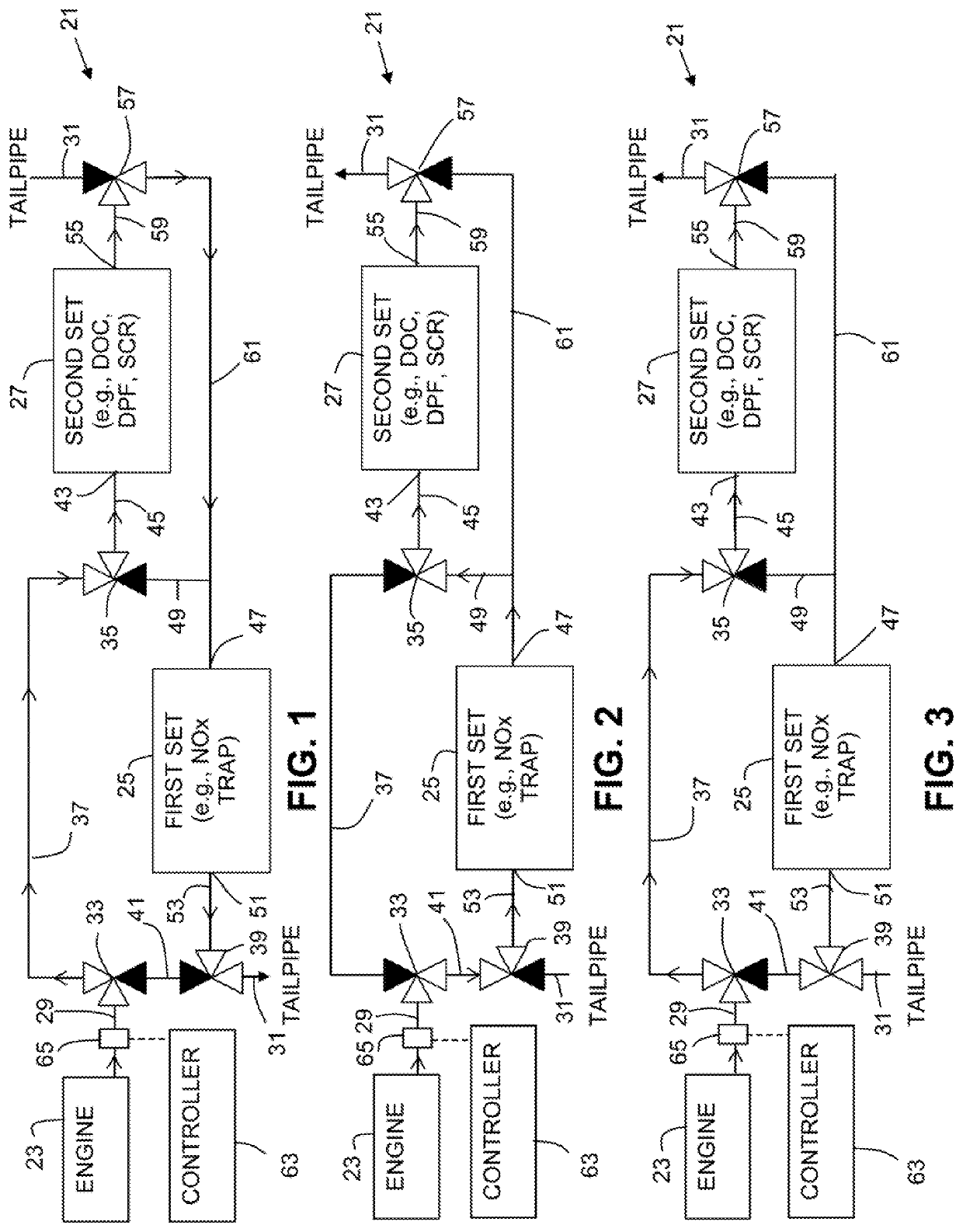Exhaust after-treatment system with adjustable flow path, and method for operating such an exhaust after-treatment system
- Summary
- Abstract
- Description
- Claims
- Application Information
AI Technical Summary
Benefits of technology
Problems solved by technology
Method used
Image
Examples
Embodiment Construction
[0017]An exhaust after-treatment system 21 (EATS) for an engine 23 is schematically shown in different operating modes in FIGS. 1, 2, and 3. The technology discussed in the present application involves a diesel engine and associated EATS components, however, it will be appreciated that the present invention has application in other engine exhaust after-treatment systems.
[0018]The EATS 21 includes a first set of exhaust after-treatment components 25, a second set of exhaust after-treatment components 27, an inlet 29 to the exhaust after-treatment system such as a conduit connected to the exhaust manifold (not shown) of the engine, and an outlet or tailpipe 31 from the exhaust after-treatment system.
[0019]The EATS 21 further includes a valve and conduit arrangement configurable in a plurality of modes such that, in a first mode shown in FIG. 1, exhaust gas entering the inlet 29 flows through the second set of exhaust after-treatment components 27, then through the first set of exhaust...
PUM
 Login to View More
Login to View More Abstract
Description
Claims
Application Information
 Login to View More
Login to View More - Generate Ideas
- Intellectual Property
- Life Sciences
- Materials
- Tech Scout
- Unparalleled Data Quality
- Higher Quality Content
- 60% Fewer Hallucinations
Browse by: Latest US Patents, China's latest patents, Technical Efficacy Thesaurus, Application Domain, Technology Topic, Popular Technical Reports.
© 2025 PatSnap. All rights reserved.Legal|Privacy policy|Modern Slavery Act Transparency Statement|Sitemap|About US| Contact US: help@patsnap.com

